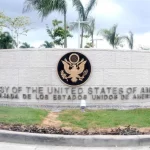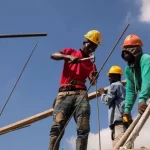If education is the cure for poverty, then how do we make the antidote?

The United Nations recently claimed that the MillenniumDevelopment Goal that focused on primary education increased global enrolmentfrom 83% to 91%. Despite these gains, today it is estimated that 124 million children do not attend school and 757 millionadults are illiterate.
The nearly one billion people without a proper education isdistressing as a good education is a proven foundation for alleviating poverty,sustainable economic progress, healthier lifestyle and enhanced socialdevelopment. Inexplicably, the international community continues to fail theglobal poor by not creating access to legitimate education programs that allowthem to conquer poverty.
The UN’s Millennium Development Goal (MDGs) on education mayhave achieved some progress but overall it was ineffective as it concentratedmore on the quantity of children attending classes rather than the quality ofeducation at every age group.
Substandard education was highlighted in an UNESCO report that stated over 29 million children dropped out of school inSub-Sahara Africa each year. The reason can be attributed to the children notreceiving a high level of education as in most cases classroom sizes are toobig and teachers are unpaid, inexperienced or have no training.
As a result, of the poor quality of education, an uneducatedparent is more focused on their short-term needs and neglects the long-termbenefits of education and thus pulls their children out of school to work. Thiscan be seen as a result of the UN not making great gains in improving adulteducation. Since the parents have not personally experienced education bettertheir quality of life, they miss the advantages for their children and thusremain trapped in the cycle of poverty.
Other education problems include; ineffective, outdated, orirrelevant curriculum that does not teach students the most essential skillsfor success where they live. Plus, many children have the impossible task ofconcentrating without having the correct nutrition to properly think as schoolslack funding for food programs. Such food programs can also be an addedincentive for parents to enroll their children, as they will receive free food.
Fixing Education in the Developing World
In September 2015, the UN announced that one of the newSustainable Development Goals (the new MDGs) would be improving the ‘Quality’ of global education. This time around the new goal is morebroadly focused on all levels of education and aims to eliminate gender andwealth inequalities.
While this is a step in the right direction, ultimatelyachieving quality education, will involve increased investment ininfrastructure, teacher training, curriculum development, classroom materials,technology, food programs and lowering schools fees. Most importantly theultimate goal should be ensuring any program is focused on learning and notjust attendance.
Today no universal education model will work for every country,as each education system must be adapted to the local and cultural dynamicsthat exist in every unique location. This means that national governmentsshould give local leaders, parents and teachers greater educational autonomy, includingincreased input in setting the curriculum in their region.
More emphasis needs to be put on teaching skills that areapplicable for obtaining jobs in each specific region. For example, a placelike Palawan Island in the Philippines, which was voted the most beautifulisland in the world but is also one of its poorest regions in the country,should focus more on tourism skillsets, such as learning languages. Mineralrich countries like Peru or the Democratic Republic of the Congo should putmore value into teaching skills aimed at securing legitimate jobs in industriesby developing better math, science or geography programs that can produceengineers or geologists (one of Peru’s highest paid professions).
Education Innovations Can Be part of the Solution
There is hope for improving global education as successfulinnovative ideas are being used by many organizations, such as One Laptop per Child,who have developed and distributed millions of durable, economical, low poweredlaptops that allows rural children to digitally access updated textbooks,classes and information.
Also, isolated rural areas Internet problems have been solved byAlphabet’s Loon project (Google’s holding company) as they have developed technologythat can supply Wi-Fi access to isolated rural areas by launching balloons intothe sky. In fact, India is attempting such a project to combat their low Internet user rate and fighttheir weak education level.
Plus, Bangladeshi based NGO BRAC, has been successfullyproviding quality education to the poor with their non-formal primary educationprogram, which has a dropout out rate of less than 5%. In addition they have a thriving adult education program thatputs emphasis on women by teaching them to read, write, and share theirresources so they so can successfully run businesses.
Another great innovator is The Economist 2015 innovation award winner Bridge International, who hasdeveloped a low cost model for building nurseries and primary schools thatdelivers high quality education in East Africa.
These innovations can advance global education but need to becombined with increased global investment into the education sector. Corruptionand the lack of knowledge of the importance of education means that governmentsare not investing enough money into their education sector and sometimes evenspend more on their military.
Moving Forward
Developed countries can also take some of the blame as KevinWatkins from Overseas Development Initiative has previously stated that only two percent of yearly internationalglobal aid given to developing countries isinvested into education. To combat this, countries such as the USA, Canada,Australia and EU countries must put stricter conditions on their aid and makesure that it is invested effectively in the education sectors of developingcountries.
Obviously, education is not the only solution to achievesustainable human and economic development, but it is undoubtedly thefoundation for true progress. In the next decades, with the help of increasedinvestment and utilizing advances in technology, we have a great opportunity togive the world’s poor a quality education and with it the tools to alleviatepoverty.
We can use South Korea as an example, as in the 1960s, they werea poor country with a horrendous education system and today they havetransformed into an economic powerhouse by having one of the best educationsystems in the world.
This article was originallypublished with Global Policy Journal on January 4th, 2016.
Brad L. Brasseur is a Canadian international developmentspecialist who has traveled to over 80 countries in the world, while working inseveral NGOs, including extended time on education programs in Peru andUkraine. You can follow him on twitter at: @brbrasseur.
_____
Ed. Note: DominicanToday welcomes Mr. Brad L. Brasseur to its select group of Op-Ed contributors

















